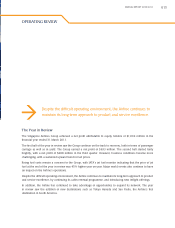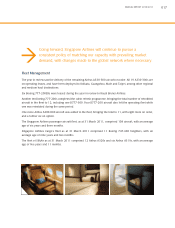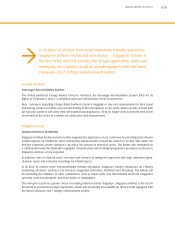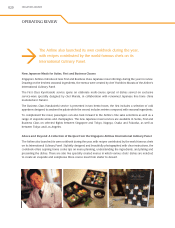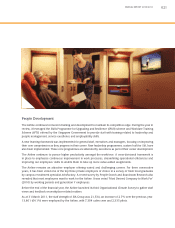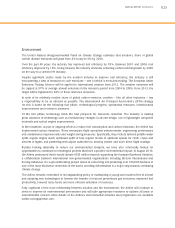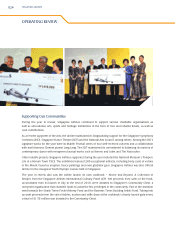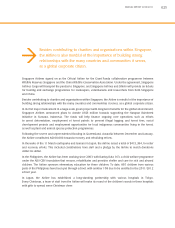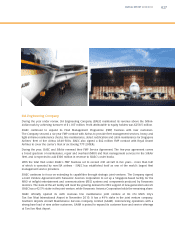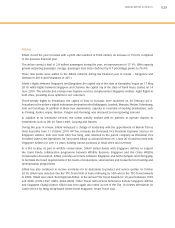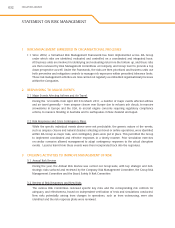Singapore Airlines 2011 Annual Report Download - page 25
Download and view the complete annual report
Please find page 25 of the 2011 Singapore Airlines annual report below. You can navigate through the pages in the report by either clicking on the pages listed below, or by using the keyword search tool below to find specific information within the annual report.
ANNUAL REPORT 2010/2011 023
Environment
The United Nations Intergovernmental Panel on Climate Change estimates that aviation’s share of global
carbon dioxide emissions will grow from 2% today to 3% by 2050.
Over the past 40 years, the industry has improved fuel efficiency by 70%. Between 2001 and 2008, fuel
efficiency improved by 16%. Going forward, the industry envisions achieving carbon neutral growth by 2020
on the way to a carbon free industry.
Despite significant strides made by the aviation industry to improve fuel efficiency, the industry is still
encountering a slew of measures to curb emissions – one of which is emissions trading. The European Union
Emissions Trading Scheme will be applied to international aviation from 2012. The aviation emissions will
be capped at 97% of average annual emissions in the reference period from 2004 to 2006. From 2013, the
target will be tightened to 95% of these reference emissions.
In spite of its relatively modest share of global carbon emission, aviation – like all other industries – has
a responsibility to be as efficient as possible. The International Air Transport Association’s (IATA) strategy
for this is based on the following four pillars: technological progress, operational measures, infrastructural
improvements and economic measures.
Of the four pillars, technology holds the best prospects for emissions reduction. The industry is making
great advances in technology such as revolutionary changes in aircraft design, use of lightweight composite
materials and radical engine improvements.
In the meantime, as part of ongoing efforts to reduce fuel consumption and carbon emissions, the Airline has
implemented various initiatives. These encompass flight operations enhancements, engineering performance
and maintenance improvements and weight saving measures. Specifically, they include tailored potable water
uplift, regular engine wash, optimised uplift of fuel, regular review of optimum speeds for climb, cruise and
descent of flights, and partnering with airport authorities to develop shorter and more direct flight routings.
Besides looking internally to reduce our environmental footprint, we have also continually looked for
opportunities to contribute to meaningful projects that have a positive environmental impact. In August 2010,
the Airline announced that it would donate US$3 million towards supporting the Harapan Rainforest Initiative,
a collaboration between international non-governmental organisations including BirdLife International and
Burung Indonesia. It is a groundbreaking project aimed at conserving and protecting over 100,000 hectares of
one of the most biodiverse rainforests in the world; arresting deforestation is a major step towards combating
climate change.
The Airline remains committed to its longstanding policy of maintaining a young and modern fleet of aircraft
and adopting new technologies to harness the benefits of reduced greenhouse gas emissions, improved fuel
productivity, lowered noise levels and more efficient utilisation of resources.
Fully cognizant of the close relationship between aviation and the environment, the Airline will continue to
strive to improve its environmental performance and will take appropriate measures to address all areas of
environmental concern. More details of the Airline’s environmental activities and programmes are available
online at singaporeair.com.




